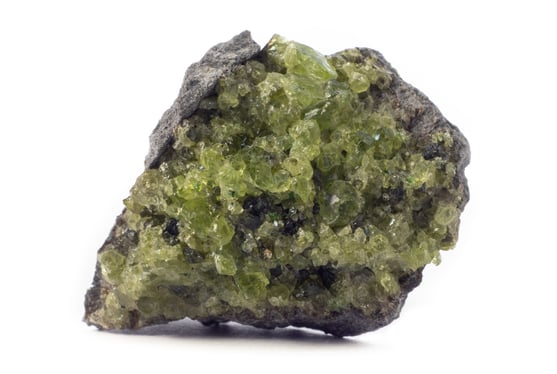Olivine in the age of Climate Crisis
How this little-known mineral could form part of the solution
By Natasha Higgins-Schjelderup
10/29/20233 min read


On the west coast of Norway, a few kilometres from the village of Åheim, is an open excavation pit – home to the largest commercial olivine deposit in the world.
This seaside quarry, run by Belgian industrial minerals company, Sibelco, works to extract olivine from the earth’s crust by drilling, blasting and crushing. A single blast (used to break up the rocks) removes up to 40,000 tonnes of olivine.
The site is predominantly powered by hydroelectricity and boasts a 4km conveyor system for transport which limits the need for heavy vehicle or double-handling of materials in a bid to reduce emissions.
A single blast removes up to 40,000 tonnes of olivine
After blasting, the olivine is put into a crusher before being loaded onto the conveyor to a processing and storage facility. At the processing plant it is crushed further and screened into undried and dried products depending on the end application.
Olivine is officially a silicate mineral, composed of magnesium, iron and silicate. It is highly abundant due to its stability at high temperatures and pressures and is estimated to cover 50 to 70 percent of the Earth’s upper mantle’s mineral composition.
Norway is fortunate in its location at the boundary between the Eurasian and North American tectonic plates. A history of volcanic and igneous activity has led to the presence of olivine-rich rocks in certain areas, meaning Norway possesses around 50% of the world’s supply. Olivine is also mined in Greece, New Zealand, Oman, Germany, Italy, France, Sri Lanka and the United States and traditional uses have varied from refectory materials to sandblasting to soil conditioners and gemstones.
While in Åheim the seamless process of open pit mining hums along in the way it has done for over 70 years, it is the uses for olivine that are evolving thanks to recent scientific breakthroughs in the fields of carbon capture and cement decarbonisation by companies like Seratech, specialising in olivine-based technology.
The uses for olivine are evolving thanks to recent scientific breakthroughs by companies like Seratech
“Olivine has the unique ability to sequester and absorb CO2 from the atmosphere as it weathers,” explains Seratech CEO, Sam Draper. In nature, this process known as ‘mineral carbonation’, can take thousands of years. So, here’s a thought: what if mineral carbonation could be sped up and turned into a rapid process, trapping and sequestering global emissions on a vast scale? After all, industries like cement and concrete, generate a shocking 3 billion tonnes of carbon emissions annually.
The Seratech process starts by splitting olivine into silica and magnesium. The Silica can directly replace up to 40 percent of cement in an ordinary concrete mix thus generating carbon neutral concrete. The remaining magnesium absorbs CO2 from industrial flues and becomes magnesium carbonate. This can be used as the sole binder in applications like building blocks, plasterboard and bricks.
Barney Shanks, CTO at Seratech, further explains: “By adding CO2, which could potentially come directly from industrial sources, Seratech’s technology produces two compounds from olivine. One is a silica powder, or engineered pozzolan, which can be added to cement, while the CO2 ends up permanently sequestered within a by-product – magnesium carbonate.”
Seratech’s olivine-based technology is designed to trap and absorb CO2 as it is released into the atmosphere by industry flues
Seratech has thus engineered a very neat solution which not only captures the carbon but also mineralises the CO2 into a product. According to Mike Eberlin, business advisor to Seratech and former chair of the MPA Cement, “We end up in this clever situation - we absorb CO2 and create two binders that replace cement”.
Olivine is therefore the subject of great potential and innovation in hard-to-abate sectors. As mining continues in Åheim, removing deposit close to the earth’s surface, the hope is that ultimately olivine will play a vital role in decarbonising industries responsible for tipping the balance in carbon emissions in a practical and inexpensive fashion.
